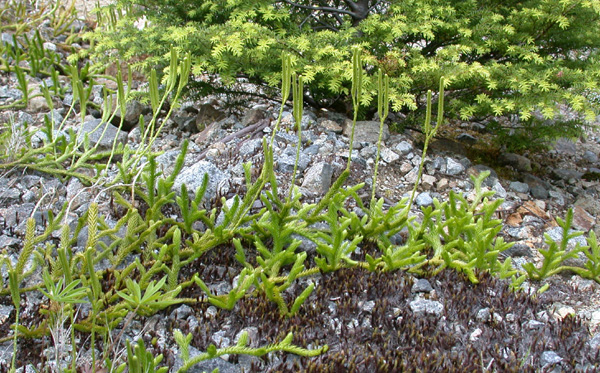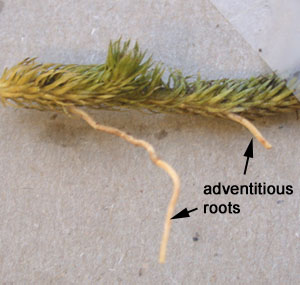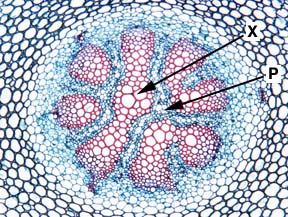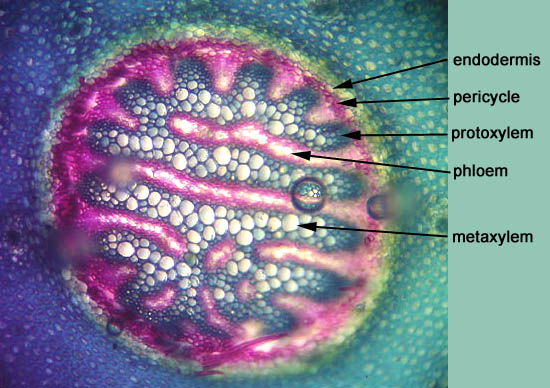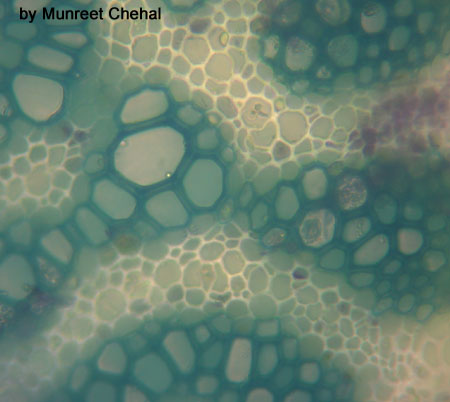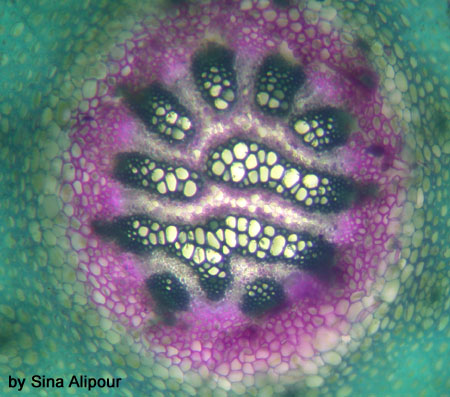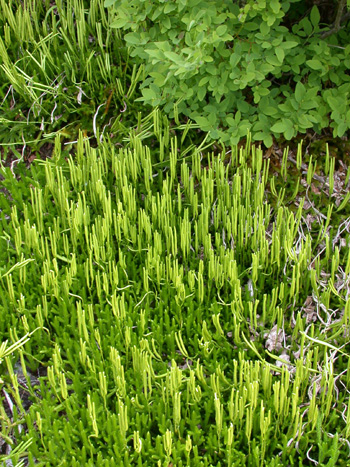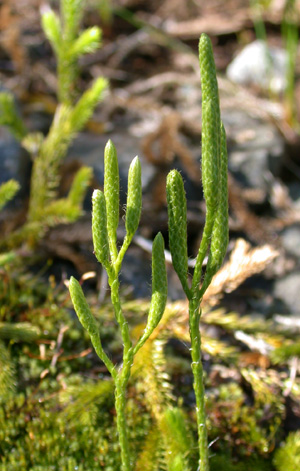LYCOPODIACEAE
The family Lycopodiaceae consists of five extant genera Lycopodium, Lycopodiella, Huperzia, Diphasiastrum, and Phylloglossum. There are approximately 400 species of Lycopodium.
For the most part, Lycopodium plants are relatively small with some shoots that may reach one meter in length. Branching is fundamentally dichotomous (ie within an apical meristem, a single center of meristematic activity becomes two). Unequal branching is not uncommon, leading to the appearance of monopodial branching (pseudomonopodial). Unequal branching may also lead to the formation of ‘bulbils’ or ‘gemmae’, which are specialised vegatative reproductive branches.
Leaves are always simple with a single vein, and may range from a scale-like (imbricate) appearance to broad, leafy forms. Leaves are most often entire, although leaf dimorphism occurs in some species. Leaf arrangement is usually helical, but may also appear opposite or whorled.
Lycopodium (“club mosses”)
Here you see the creeping habit of the club moss. You can find it in wet and dry forests in our area. Cypress Park is a good place to see this interesting organism.
The leaves are spirally arranged and the plant creeps along the ground so it apparently looks like a moss…
You can see that it attaches itself to the ground by adventitious root. Adventitious roots are those which arise from places other than a root. These roots arise from stem.
This is the cross-section through the stele of a stem of Lycopodium. The stele is a cylinder. You can see the xylem (X) and phloem (P). The outer margin of the stele is bordered by an endodermis. This is a plectostele (a type of protostele).
This is another section through the stele:
You can see the xylem matures from the outside (protoxylem) toward the inside (metaxylem) of the vascular cylinder (exarch primary xylem development). This is similar to the roots we studied in Lab 3.
This picture shows you the endodermis (indicated with pink dots).
Identify the vascular tissues.
Another great picture!!!
Compare your observations with Raven, your lab manual, and the GLOSSARY OF STELE TYPES.
Lycopodium – Reproductive Structures
The picture below was taken on the side of the road going up to Cypress Bowl. You can see the many strobili.
The strobili are borne on erect specialized brached stems.
Note the two strobili borne on the aerial stem.
Here you can see the sporangium attached to a sporophyll. The spores are released when the sporangium splits open (you can see that in the picture).
This is a longitudinal section through the strobilus. The leaves of the Lycophytes are microphylls (M). When they are associated with sporangia, as they are here, they are called sporophylls. The spores (Spor) are all of one type giving rise to gametophytes which produce both male and female reproductive structures.
Huperzia
The sporangia of Huperzia are not localized in strobili. The sporophylls resemble the vegetative leaves. Some species of Huperzia reproduce vegetatively by means of propagules which are produced in clusters near the stem apex as seen in this picture. Propagules readily fall from the parent plant, form roots, and develop into new individuals.

